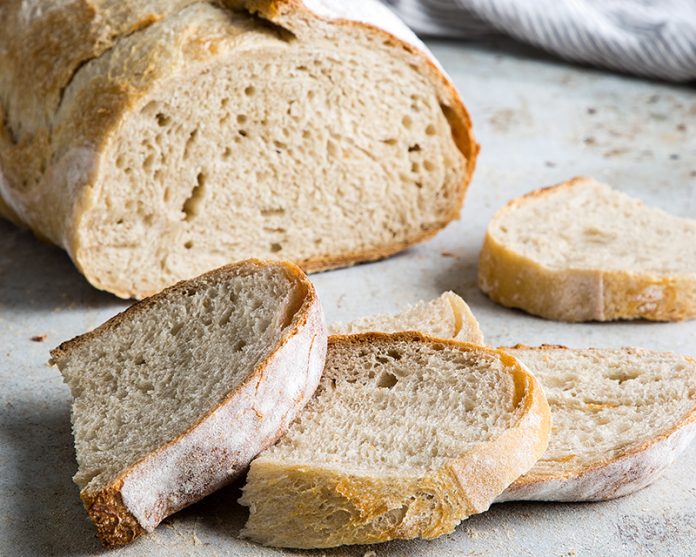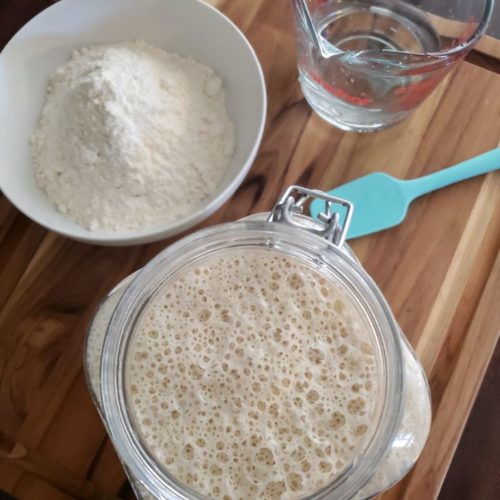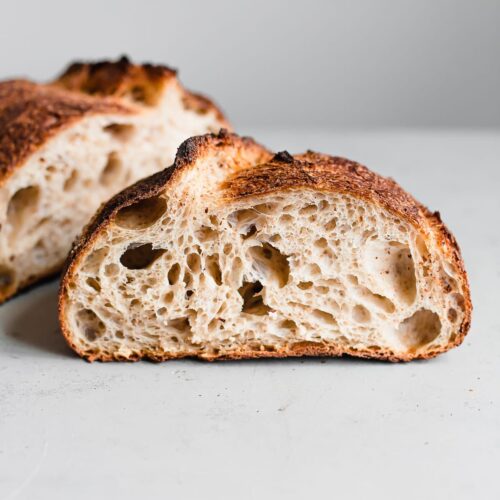What Should I Do If My Sourdough Starter Doesn't Rise?

Sourdough is fermented dough that you may use to make bread. This dough can be obtained from a prior form of baking and used in other recipes.
You must ensure that your starter is rising so that you can operate correctly in your following bread recipe. If your sourdough starter isn’t rising, your bread will be unusable.
To rise, the sourdough starter needs to be fed regularly. This type of substance is made up of active ingredients, and it can take up to 14 days to reach the desired increasing level.
You must feed your sourdough starter with water and flour at least once a day. Depending on the flour used, you’ll discover recipes that recommend feeding every 12 hours.
What’s the deal with my sourdough starter not rising?

For a variety of reasons, your sourdough starter may not be rising.
The good news is that all of these issues are easily avoidable, so you can still enjoy delicious bread if you keep your sourdough rising.
No. 1 You may not be feeding it frequently enough.
If you don’t feed your dough at least once a day, it won’t rise. When it comes to feeding it, half a cup of water and one cup of all-purpose flour are typical amounts to use.
You can adjust these numbers depending on the rising level you want to achieve and the amount of bread you create. However, make sure that the ratio between them is maintained.
No. 2 You are wasting water.
If you use too much water, your sourdough could end up not rising. A liquid texture may suffocate the flour in your mixture, causing it to stop rising.
As a result, make sure to use less water than flour whenever possible. Check the consistency of your dough to ensure that it maintains the texture you desire so that it continues to grow.
No. 3 Take your time!
Finally, time is a factor responsible for not achieving the sourdough amount of rising that you desire.
You’ll need to give it plenty of time to rise, which could take many weeks. This type of dough requires patience, and the more you prepare it, the better you will get at it.
When my sourdough starter doesn’t rise, what should I do?

If your sourdough still doesn’t rise after you’ve tried all of the above approaches, you’ll need to take further steps. Fortunately, there are alternative options for dealing with this scenario, and here are a few of the finest.
Increase the number of feedings, to begin with. If you’ve been feeding your dough every 24 hours, but it’s not rising as quickly as you’d like, consider feeding it every 12 hours or even every 8 hours.
Increasing the number of feedings is another approach to help your dough rise — double the water and flour amounts for a few days to see how it influences the rising.
In most circumstances, these remedies will help your dough rise faster, allowing you to get the most out of it and use it in a great bread recipe.
Why isn’t my sourdough rising?
You may need to wait a little longer if your sourdough doesn’t rise as rapidly as you expected. Most of these doughs will take days to rise, so don’t be upset if it takes longer than that.
However, you should still detect a consistent degree of growth. If your dough is constantly rising, it indicates that it is developing correctly. Only if your dough stops rising should you be concerned.
If the rising level does not satisfy you after many days, you can use one of the ways listed above. Increase the number of feedings or the amount of dough you add to each feeding.
You wouldn’t get the fluffy and flavorful bread you want if your sourdough didn’t rise enough. It is critical to devote time and patience to the rising process.
Is it possible to add yeast to my sourdough starter?
Adding a little yeast to your sourdough starter is a terrific way to speed up the rising process. You don’t need much yeast; just a pinch can assist the rising process to go more smoothly and with less effort on your part.
It’s crucial to remember, though, that adding yeast to your dough can change the flavor of your bread. Without the yeast, your loaf of bread would not have the same sour flavor.
Small envelopes of yeast can be found on the market, and you should only use one at a time to avoid using too much yeast.
Even if yeast can help the dough rise faster and more consistently than a simple combination of water and flour, that doesn’t imply you should use it. Without yeast, you can make an excellent raised sourdough starter.
You may have made your starter’s composition too liquid if it does not rise in the first week or even after two weeks. As previously said, too much water will stop the rising process since the water will suck in your flour.
Many individuals crave a mild sour flavor in their bread. They are adamant about achieving it without using yeast in their starter. It is even recommended not to use yeast if you are passionate about not changing the flavor of your bread.
2 weeks without a rising sourdough starter
There are times when your sourdough will not rise no matter what you do or how patient you are. It would be best if you observed a certain level of rising in your sourdough starter after the first two weeks.
Every time you put together the dough mix, keep the half cup water to one cup flour ratio in mind. But what if you’ve already put too much water into it and it hasn’t risen as a result? You can compensate by simply adding flour.
In this situation, you’ll need to figure out how much flour to add because the dough already has too much water. You may accomplish this by kneading it and feeling how consistent it is.
The dough must be easy to work with and not too runny. Every day, check the consistency of your dough until it rises at a consistent rate.
Not floating sourdough starter
All-purpose flour is the ideal flour for a sourdough starter. Your dough should float if you use the correct ratio of all-purpose flour to water. If you observe that your starter isn’t floating, you may have used the incorrect flour.
However, if you use any flour other than all-purpose, your dough will float slower or not at all.
Another reason for a sourdough not floating correctly is a lack of moisture, so make sure your dough has enough water to start the floating process.
Conclusion

At first, making the perfect sourdough starter can be complex. However, the more effort you put into it and the more attention you pay to proportions as you mix the components, the more likely you will develop the right starter for your bread.
Using the advice in this guide will undoubtedly assist you. Keep in mind, though, that your perception is just as crucial.
When in doubt about the texture of your dough, the best thing to do is to feel it with your hands. Use the information in this article to make an excellent loaf of bread at home.











